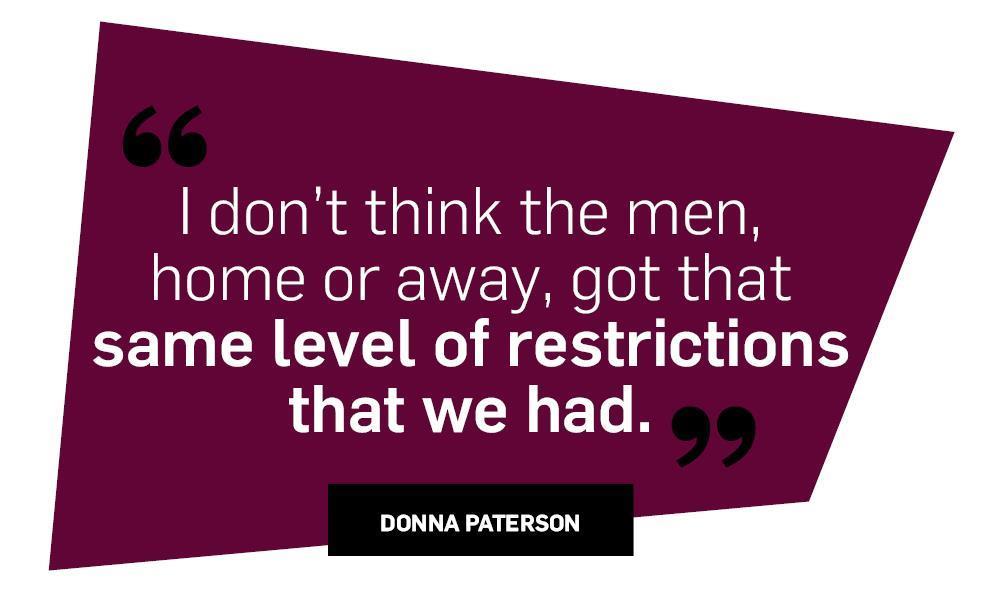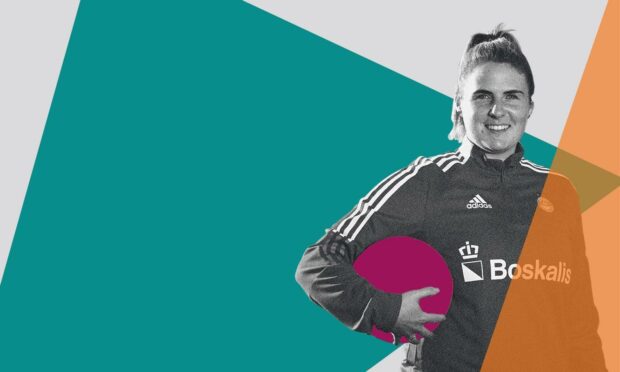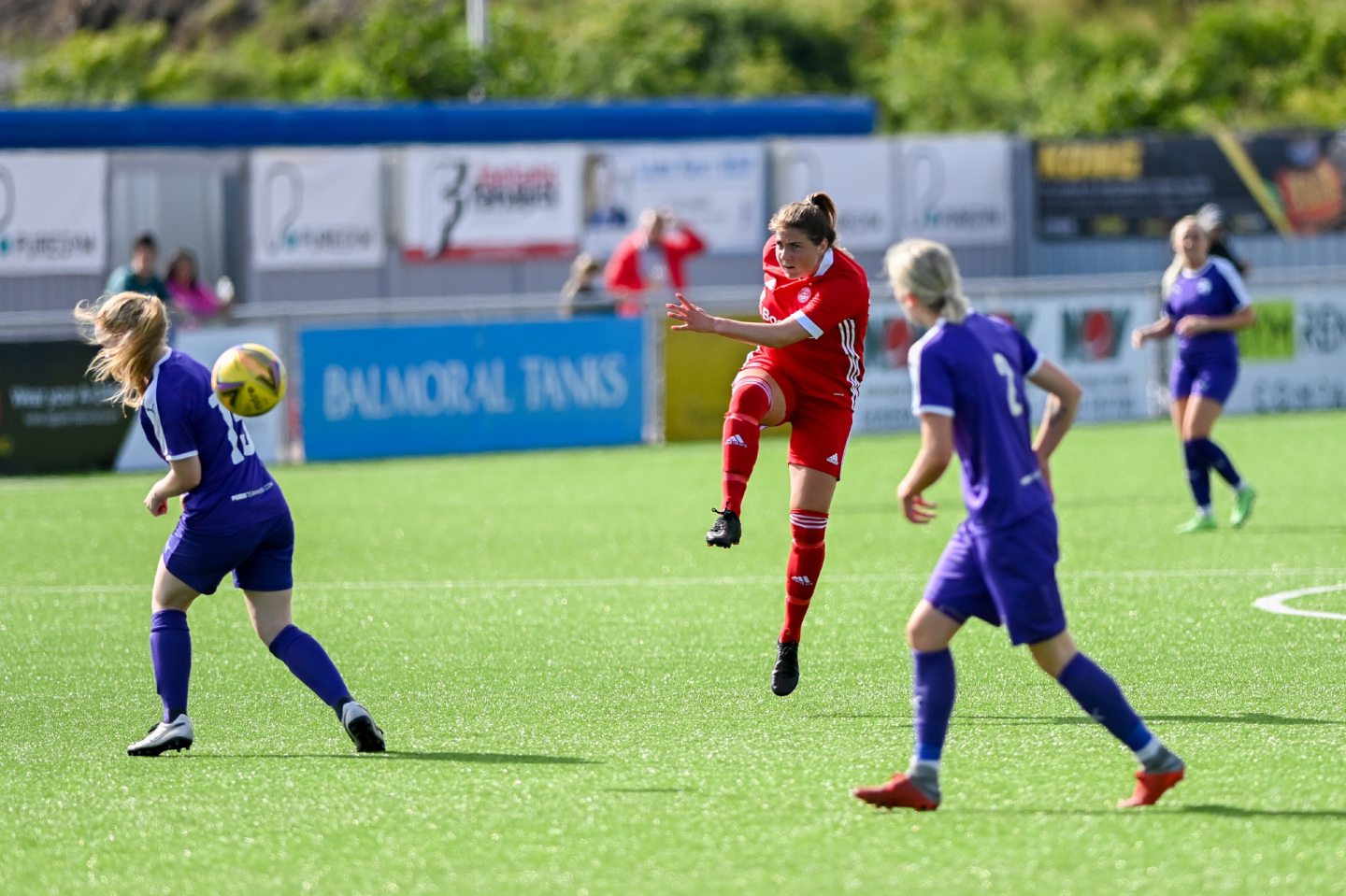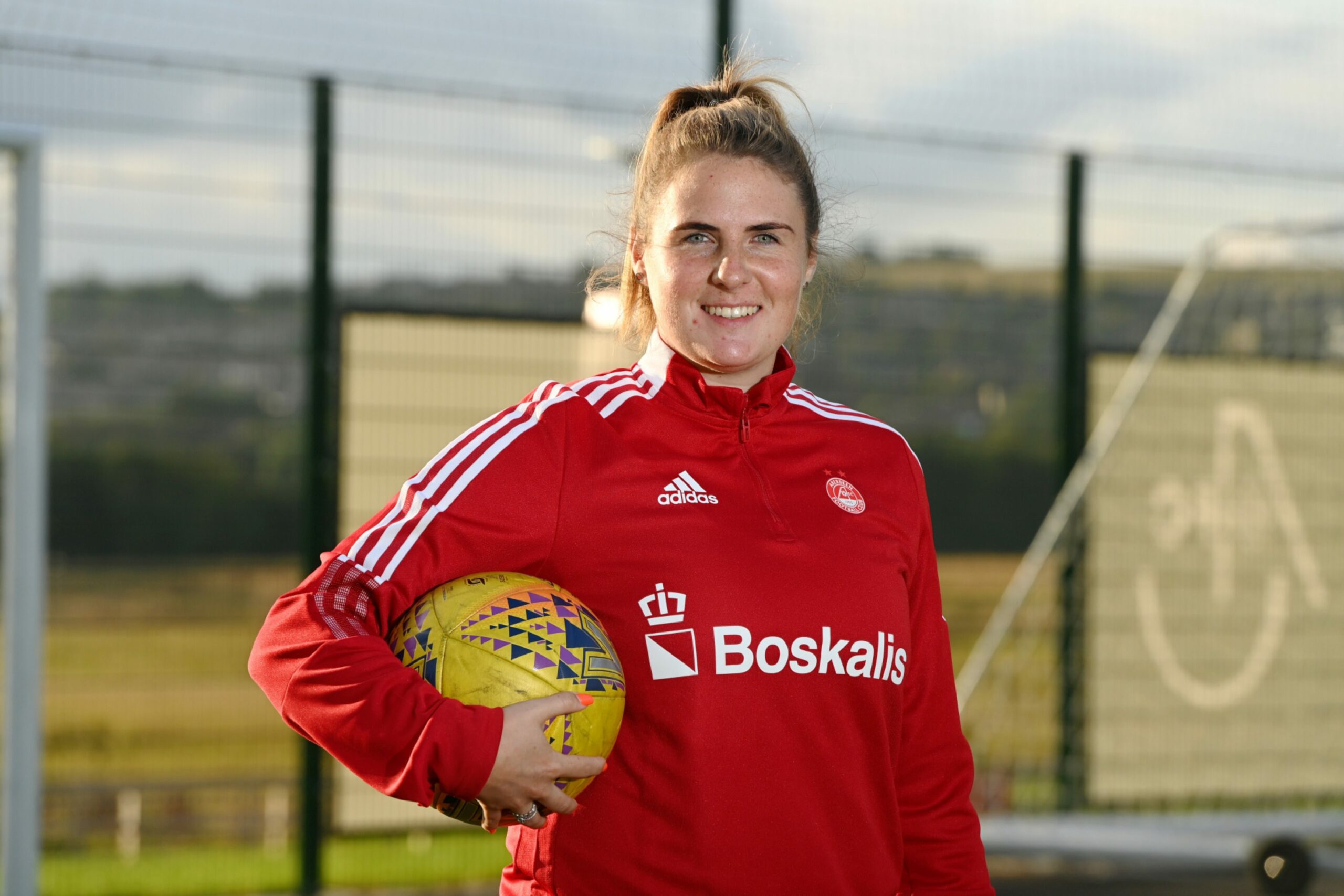Donna Paterson knows more than most the demands of playing in Scotland’s top flight having done so for the last five years.
Still only 23 years old she has an impressive CV having signed for SWPL 1’s most successful club Glasgow City back in 2018, before moving to Forfar Farmington where she left to sign for Aberdeen Women last summer.
And while Paterson has experienced some incredible highs, including being capped as a Scotland youth international, her time playing football hasn’t always been a positive experience.
The Aberchirder native has often been made to feel as if women’s football is considered an afterthought to the men’s game, and experienced this first-hand last season while playing for Forfar.
Like football across the globe, last season’s SWPL 1 was heavily disrupted by Covid and when play did resume rules and regulations were put in place by the sport’s governing bodies.
Changing facilities became a problem area due to the need for social distancing.
Paterson remembers having to get changed in the stands, as the media pottered around the stadium setting up television cameras to broadcast the game.
‘You would never see that happen in the men’s game.’
“We had to get changed in the stands on a BBC televised game. They weren’t streaming it at that point, but all the cameras were there.” Paterson explained.
“We were changing in our sports bras right in the middle of the stand.
“It wasn’t any clubs fault; it was purely the guidance that had been given by the league because of the restrictions at the time where you weren’t allowed in changing rooms.
“You would never see that happen in the men’s game.
“It was our home ground and even still we weren’t allowed to go in any sort of facility to change, we were made to change in the stand.”
In our survey 81% of participants felt that better facilities would help to attract more women to take up football.
A stat that is unsurprising if those playing at the highest level in Scottish domestic football felt degraded with the ‘facilities’ they were provided with.
‘This is embarrassing’
It started to take its toll and Paterson and her teammates were left feeling humiliated.
Paterson added: “I think the first few games we accepted it because it was because of Covid, but it wasn’t until the cameras were there when we came together and said this is embarrassing.
“We’re playing in the top flight in Scotland and having to change in the stand. That’s what you used to do if you were playing fives or sevens. It was no use.”
Even now Paterson struggles to understand the reasoning behind that rule – including when guidance was changed to only away teams being required to change in the stand.

SWPL 1 players were PCR tested ahead of games to mitigate the risk of Covid outbreaks.
And while Paterson understands that rules had to be introduced, she feels women’s football was treated as an afterthought when restrictions were put in place.
“I remember being at an away game and being in the stand thinking this isn’t right.
“We ended up just getting changed in our cars because at least then you get a wee bit of coverage.
“I don’t think the men, home or away, got that same level of restrictions that we had. We were getting tested too so there was no reason for there the rules to be any different.
“We got PCR tested every Thursday because we had to be tested before playing a game so we would know that everyone would be negative.”
Anyone who witnesses sexist abuse, harassment or discrimination, can report it in a number of ways.
You can report discrimination within Scottish grassroots football to the Scottish Football Association.
Or search for Scottish FA Grassroots in Google Play or App store.
Also, the Her Game Too anti-sexism campaign has an anonymous online form.
If you feel the form of discrimination you witnessed either on the pitch or online could be a hate crime, you may also report it to Police Scotland via 101.
Read more from this series
- Survey reveals scale of sexist abuse facing those who love the game
- Rachel Corsie: You can think I’m the worst player in the world but don’t tag me in posts or say nasty remarks
- Amy Strath: We are playing our own game – it is women’s football. We deserve to be treated with respect
- Sophie Goodwin: I was too scared to call out abuse in women’s football before. But that’s what I’m doing now
- Zoe Ogilvie: Let’s celebrate the differences and opportunities women’s football offers
- ‘Great strides made but we must remain vigilant to combat sexism in football’
- Georgia Carter: Online abuse has to be taken seriously for women’s football to grow
- Elsie Cook: We have to speak out against sexists. We can’t let them win
Credits
Words and interviews by Sophie Goodwin and Stephen Stewart
Story design by Cheryl Livingstone
Graphics by Carly Gilchrist
Data visualisations by Emma Morrice
Video by Drew Farrell, Kim Cessford and Gregor Aiken


